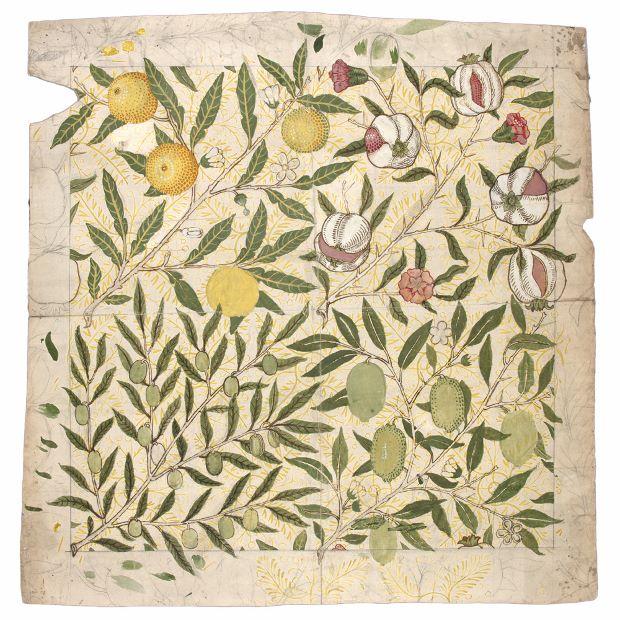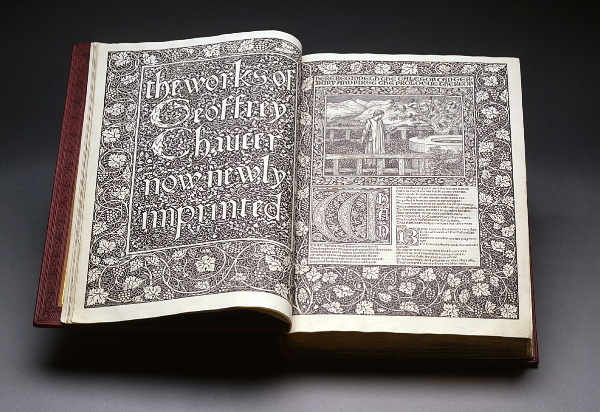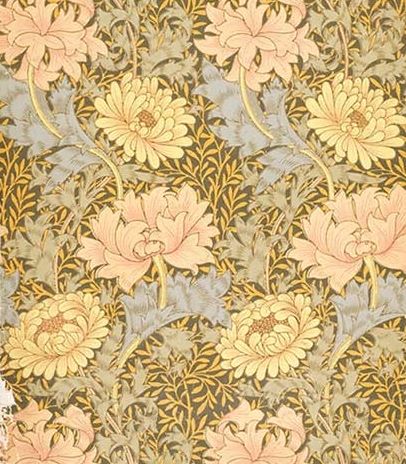
Gombrich Explains William Morris
The historian on why the Arts and Crafts movement founder railed against the aesthetics of mass production
The National Portrait Gallery’s new exhibition, Anarchy and Beauty: William Morris and his Legacy, 1860-1960, opens today in London. The show, which explores the life of this great Victorian artist, writer and thinker, will put on display portraits of Morris and his circle, as well as personal items and other objects, many of which are on public display for the first time. It promises to be an illuminating and worthwhile exhibition. Yet, why should we still examine Morris’s work, over a century after his death in 1896? Because, as the brilliant art historian E.H. Gombrich writes in the best-selling art book of all time, The Story of Art, Morris was the first major figure to attack the aesthetics of mass production.

At the beginning of a chapter entitled In Search of New Standards: The late Nineteenth Century, Gombrich writes, “In England in particular, critics and artists were unhappy about the general decline in craftsmanship caused by the Industrial Revolution, and hated the very sight of these cheap, tawdry machine made imitations of ornaments which had once had a meaning and nobility of their own. Men like John Ruskin and William Morris dreamt of a thorough reform of the arts and crafts, and the replacement of cheap mass-production by conscientious and meaningful handiwork. The influence of their criticism was very widespread even though the humble handicrafts which they advocated proved, under modern conditions, to be the greatest of luxuries. Their propaganda could not possibly abolish industrial mass-production, but it helped to open people’s eyes to the problems this had raised, and to spread a taste for the genuine, simple, and ‘homespun’.”

Morris’s Arts and Craft movement produced, promoted and prized such artisanal goods. As the name suggests, his preference informed both fine art and simple decorative practices, such as wallpaper, embroidery, clay tiles and book illustration, as Gombrich makes clear in later sections of The Story of Art.
“Remembering the love and care which earlier ages had bestowed on the production of books, men such as William Morris would not want to tolerate badly produced books or illustrations that merely told a story regardless of their effect on the printed page.”
The Arts and Crafts movement might have fallen out of fashion today, yet when we choose a hand-thrown ceramic vase over a factory produced one, or prefer a chair made in a workshop rather than on a production line, we’re acknowledging the distinctions Morris made clear all those years ago.

Moreover, modernism owes a debt to Morris, since he highlighted just what the machine age was good at producing. With reference to Frank Lloyd Wright’s functional, ornament-free architecture, Gombrich writes “if Morris had been right in thinking that the machine could never successfully emulate the work of human hands, the solution was obviously to find out what the machine could do and regulate our designs accordingly." And so, the modern age followed.
For more on Morris and co. buy Arts and Crafts Style and Arts and Craft Architecture. For more peerless insight into this period and many others, buy a copy of The Story of Art here.